Saturday, March 3, 2001
Our ryokan served breakfast, so we went down to the dining area
about 8:00 a.m. They said they could do a western breakfast for us,
but we still weren't sure what to expect. We took our shoes off
before we entered the room, naturally, and we got to sit on the
floor. They brought us each out one cold fried egg served on a bed
of lettuce, three dinner rolls, and a tiny cup of coffee -
interesting. Sure beats what the Japanese guests were eating
though. It looked like they got dried seaweed, dried fish, rice,
and a raw egg. Whatever.
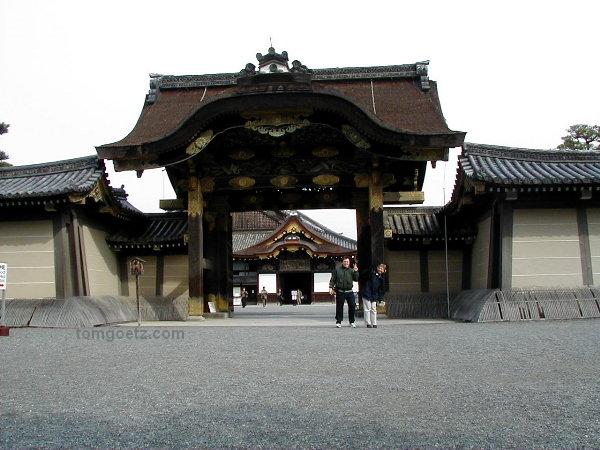
Entering Nijo-jo
We checked out, left our bags, and walked over to Nijo-jo. The
castle Nijo-jo was built in 1603 as the official Kyoto residence of
the first Tokugawa shogun, Ieyasu. As a safeguard against
treachery, Ieyasu had the interior fitted with "nightingale"
floors, which are floors that squeak at every move, making it
difficult for intruders to move about quietly, and with concealed
chambers where bodyguards could secretly keep watch.
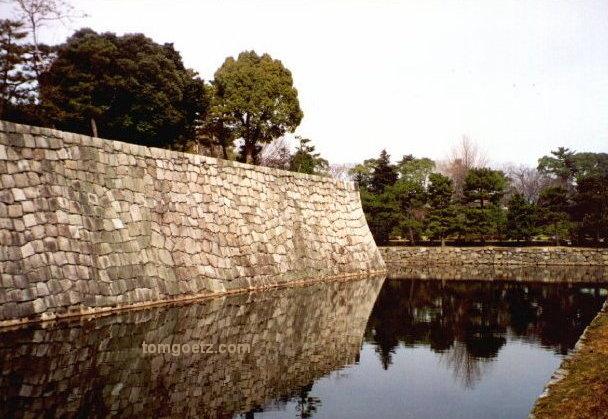
The moat at Nijo-jo
Nijo-jo rules. It has a big moat, an ostentatious palace, nifty
Japanese gardens - everything you could want! We spent a couple
hours walking around there. They give you slippers when you enter
the palace, but we noticed one of the cleaning ladies had brought
her own. She wore bunny slippers with big floppy ears!
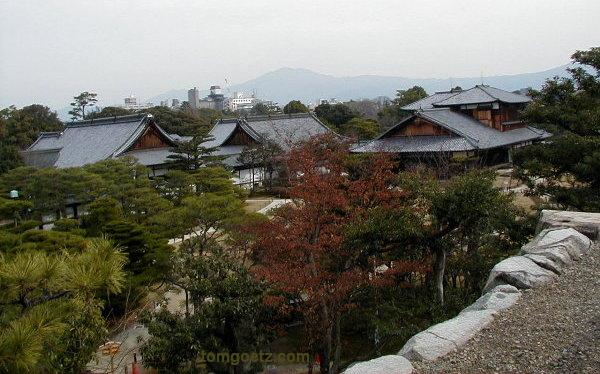
The castle and gardens
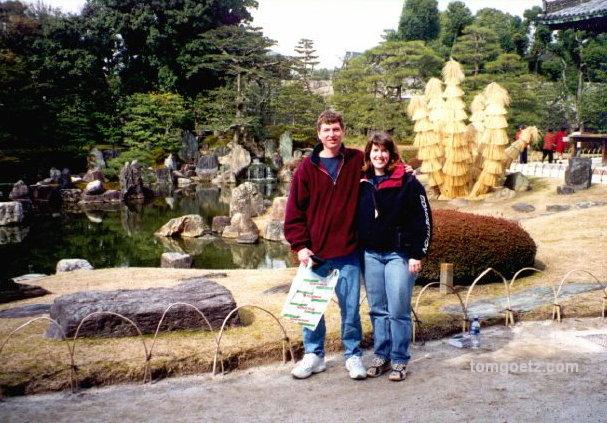
Tom and Jana at Nijo-jo
We ate lunch at a soba shop and had a nice, warm meal. Soba
noodles are thin, brown, buckwheat noodles, and they were served in
a light broth. Mark and Traci and I got ours with a big jumbo
shrimp; Tom did not.
Next we went to Kinkaku-ji, also known as the famed Golden
Temple, apparently one of Japan's best-known sites, though I'd
never heard of it before. The original building was constructed in
1397 as a retirement villa for Shogun Ashikaga Yoshimitsu. His son
converted it to a temple. In 1950 a young monk consummated his
obsession with the temple by burning it to the ground. Go figure.
In 1955 a full reconstruction was completed. The gold-foil covering
of the temple makes for quite a tacky sight. But it really is
pretty sitting there at the edge of the reflecting pond. We were
not, however, so enamoured with it that we were compelled to burn
it down.
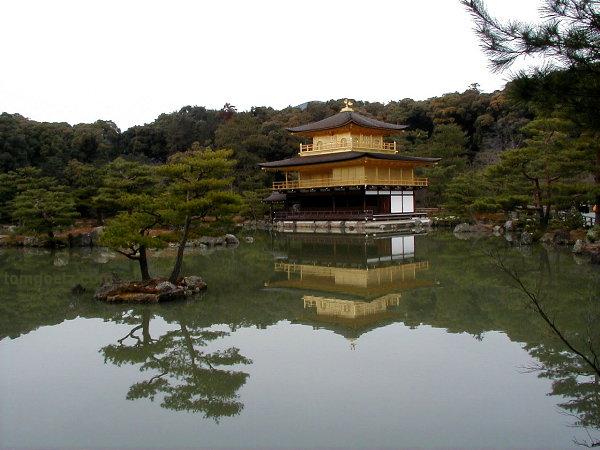
The Golden Temple
We then caught a taxi over to Ryoan-ji, a Buddhist temple. When
taking a taxi in Japan, don't make the mistake of opening the door.
The doors are automatic and the driver will control them for you.
The taxis over there are nice. They are spotlessly clean and have
doilies on the backs of the seats. And the taxi drivers wear white
gloves. I kid you not.
Ryoan-ji belongs to the school of Zen Buddhism and was founded
in 1450. The main attraction is the rock garden, a collection of 15
rocks, apparently adrift in a sea of sand, enclosed by an earthen
wall. All 15 rocks cannot be viewed at once regardless of
perspective. The designer, who remains unknown, provided no
explanation - which is unfortunate, because we didn't get it.
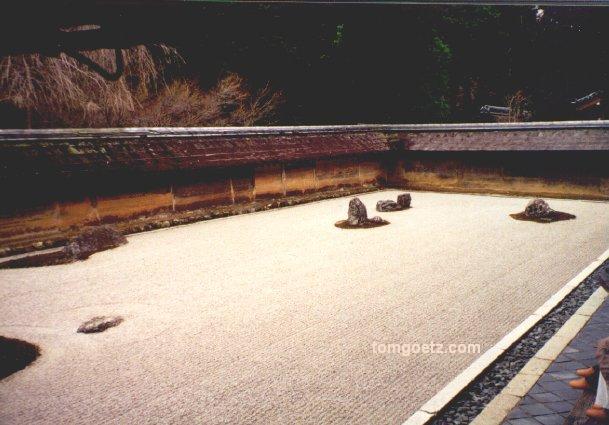
Zen rocks adrift in a sea of sand?
Then it was back on the shinkansen and back to Yokohama. Mark
and Traci had to get back to their kids. Traci scored us real
American pizza for dinner from a real American chain on the U.S.
Airbase near their home. She can get us this delicacy due to her
years of service in the Reserves. Yippee!
|





